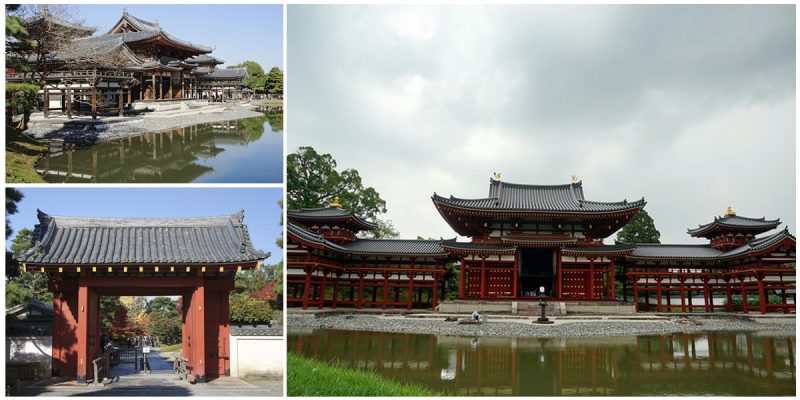Bjodoin is a Buddhist Temple that was established by Kapaku, Fujiwara Yorimichi in 1052.
It is located in the city of Uji at the foot of the Ko’olau Mountains in Kyoto Prefecture in Japan. It was originally built in the Heian Period in 998 as a villa used by the courtier Minamoto no Shihenobu who was the Minister of the Left. Today, the temple is shared by the Jodo-shu and Tendau-ahu sects.
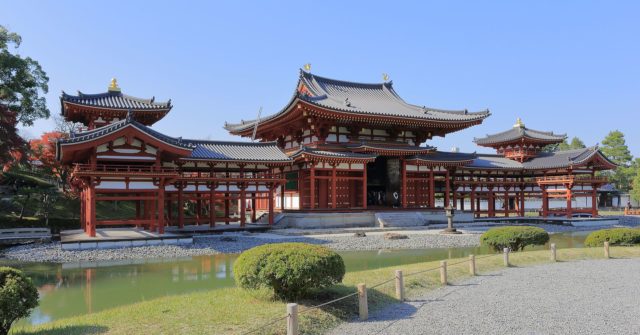
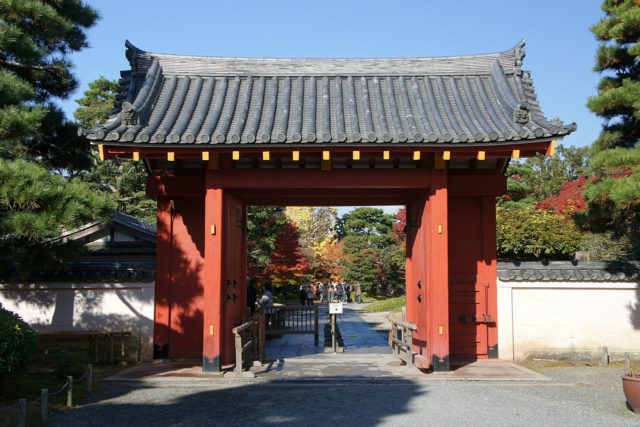
In 1502, the villa was made into a Buddhist temple, and in 1053, the Phoenix Hall or the Amida Hall was built which is the most famous building in the temple. The Hall is surrounded by a sandy beach, arched and flat ridges, and a small island. It has a rectangular structure with two wing corridors in L-shape and also a tail corridor which can be seen at the edge of an artificial pond.
It represents the body and wings of the Phoenix. This is the only remaining original building in the temple. Inside the Hall, there is the only existing Buddhist image of Amitabha Tathagata or Amida executed by Jocho.
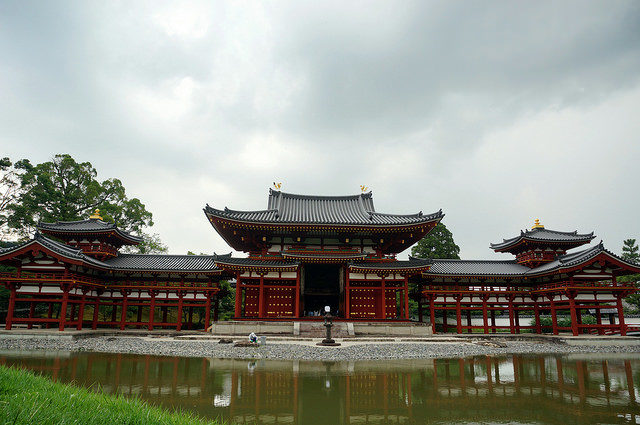
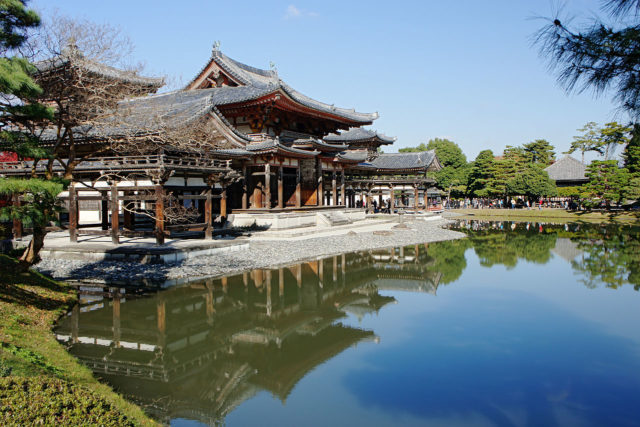
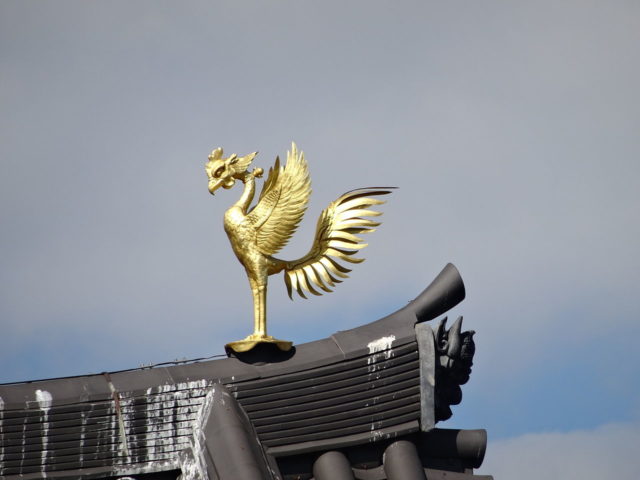
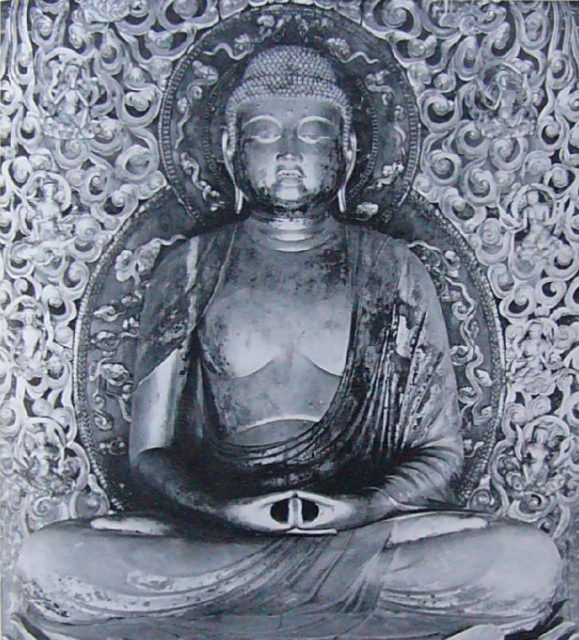
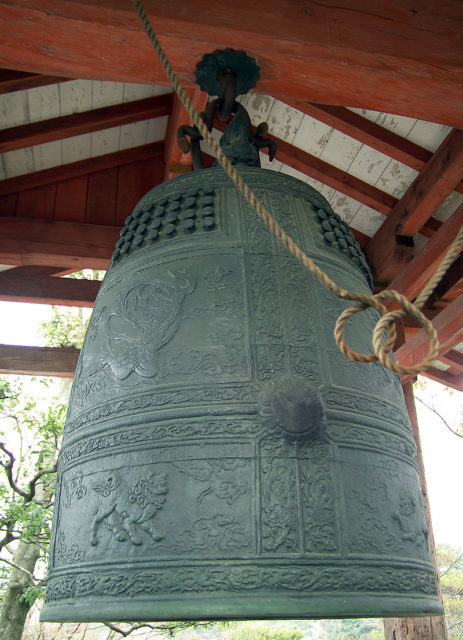
The sculpture is made of Japanese cypress and is decorated with gold leafs. Jocho used the yosegu technique to make the sculpture in which multiple wooden pieces are carved out in the form of a shell, and they are joined from the inside. The seated statue is three meters high and is surrounded celestial reliefs which are carved on the walls of the hall.
According to the host, at these celestial reliefs (Bodhisattvas) the companion of Amida, at the moment of his death descended from the Western Paradise to gather the souls of the believers and take them to Paradise. Today, there are 26 statues of Worshiping Bodhisattvas on clouds at the Hoshoken Museum. In front of the Hall, there is a Jodo-shiki garden with a pond which today is a Historic Site and Place of Scenic Beauty.
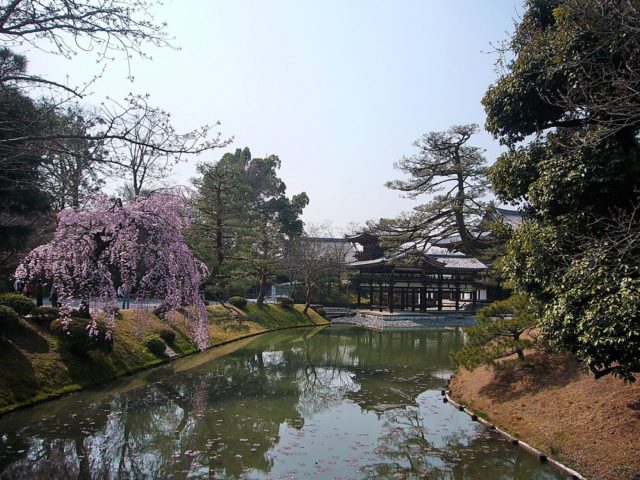
The Bjodoin museum stores most of the treasures from the temple, including the south end Phoenix, 52 wooden Bodhisattvas and one of the three best bells in Japan from the ancient period. The bell, referred to as the sugata no byodoin, is installed in the museum and its replica is hung in the temple’s belfry.
The Phoenix Hall and the statue of Amida today are national treasures, and in 1994, the Bjodoin temple was recognized by UNESCO as a World Cultural Heritage.
